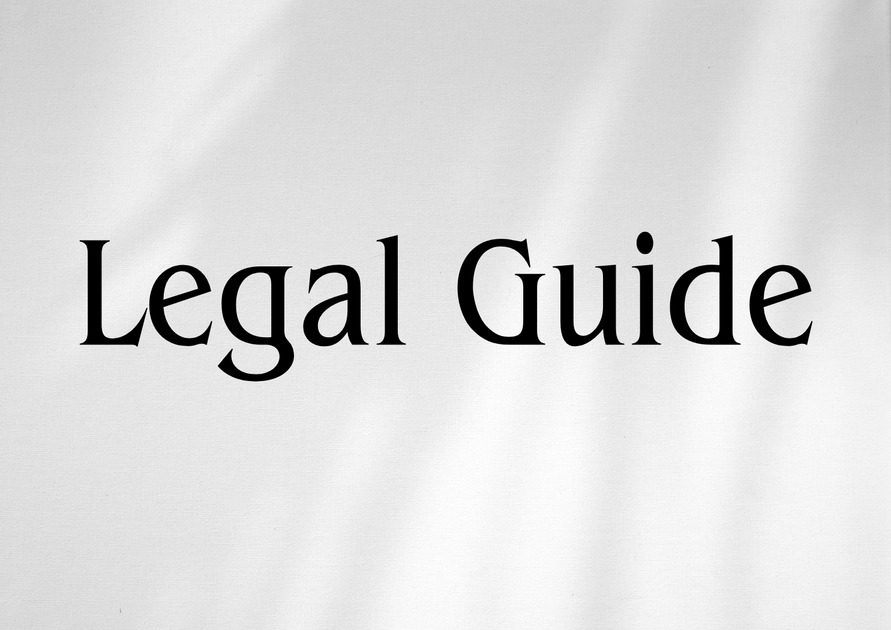Introduction
The intersection of patent law and artificial intelligence (AI) is fast becoming one of the most significant legal topics in the United Arab Emirates (UAE). As AI technologies transform industries ranging from healthcare and manufacturing to finance and logistics, the legal framework governing innovation and intellectual property is evolving in tandem. In recent years, the UAE has made notable strides to strengthen its IP regime, further aligning with international standards and fostering an ecosystem for technological advancement. The publication of Federal Law No. 11 of 2021 on the Regulation and Protection of Industrial Property Rights and subsequent ministerial guidelines reflect a progressive approach to patent protection, now challenged by the unique complexities AI inventions introduce. This article provides an expert, consultancy-grade analysis of emerging legal issues at the intersection of patent law and artificial intelligence in the UAE, offering practical guidance for businesses, executives, legal practitioners, and HR professionals operating in this dynamic landscape.
This article is particularly timely as the UAE strives to build a knowledge-based economy, incentivize innovation, and reinforce its position as a regional leader in AI policy and digital transformation. With rapid legislative amendments and the publication of clarificatory resolutions through 2024 and 2025, understanding the nuances of patent registration, inventorship, and enforcement for AI-generated inventions is no longer optional—it’s essential. Failure to comply with the latest legal standards exposes organizations to commercial, reputational, and regulatory risks, underlining the need for clarity and actionable legal strategy.
Table of Contents
- Overview of UAE Patent Law and Recent Updates
- Fundamentals of Patent Protection with AI
- Inventorship and Ownership Challenges in AI Patents
- Comparative Analysis: Old and New Patent Laws
- Patentability of AI-Generated Inventions
- Compliance Risks and Strategies for Organizations
- Case Studies & Hypothetical Examples
- Practical Best Practices for Businesses
- Conclusion and Future Outlook
Overview of UAE Patent Law and Recent Updates
Key Legislation and Regulatory Authorities
The foundation of patent law in the UAE is established by Federal Law No. 11 of 2021 on the Regulation and Protection of Industrial Property Rights (“the Industrial Property Law”). This law replaced the earlier Federal Law No. 17 of 2002, introducing sweeping changes in patent application procedures, substantive examinations, and enforcement mechanisms.
The Ministry of Economy acts as the principal regulatory body overseeing patent registrations, supported by the UAE Patent Office. Significant ministerial resolutions and Cabinet decisions, notably Cabinet Resolution No. 6 of 2022 and Ministerial Resolution No. 84 of 2023, provide additional granularity for the examination of inventions, timelines, and scrutiny of AI-related patent disclosures.
Recent Legislative Developments: 2023–2025
- Broader definition of protectable subject matter, clarifying criteria for software-related inventions and computer-implemented inventions (CIIs).
- Explicit reference to the role of AI in inventive processes, reflecting global patent trends.
- Introduction of fast-track examination for strategic sectors, including AI and digital technologies, under Cabinet Resolution No. 6 of 2022.
- Amendments to enforcement regimes, emphasizing stronger remedies for infringement involving technology patents and alignment with international dispute resolution standards.
These reforms position the UAE at the forefront of IP modernization in the GCC, yet present distinct complexities for inventors, businesses, and legal advisors dealing with AI-generated assets, especially as the boundaries between human and machine-driven inventorship blur.
Fundamentals of Patent Protection with AI
The Scope and Challenges of AI Innovation
AI innovations frequently span various domains, including autonomous systems, data-driven optimization, natural language processing, and predictive diagnostics. In accordance with Article 2 of Federal Law No. 11 of 2021, patents may be granted for any new invention that involves an inventive step and is applicable for industrial application, provided it is not excluded by law.
AI-driven inventions raise unique questions of novelty, sufficiency of disclosure, and the capacity of an algorithm or machine-learning model to meet the legal thresholds of invention. Where the centrality of algorithms and data is evident, applicants must navigate the nuanced requirements for patentability, especially as software per se remains excluded unless it achieves a tangible technical effect.
Practical Insights for UAE Patent Applications Involving AI
- Clearly define the technical problem solved by the AI system.
- Emphasize specific, non-obvious improvements the AI solution brings to existing processes.
- Provide exhaustive disclosure, including training data sets, model architectures, and operational parameters to meet sufficiency standards.
- Highlight tangible, industrial applications, such as sector-specific implementations of AI.
- Consult Ministerial Resolution No. 84 of 2023 for granularity on software and AI claim drafting.
Failure to adhere to these guidelines can result in office actions, protracted examination timelines, or rejection of applications—heightening the need for legal expertise during the drafting and prosecution stages.
Inventorship and Ownership Challenges in AI Patents
Legal Standards for Inventorship under UAE Law
The concept of inventorship remains firmly anchored to human endeavor under UAE law. Article 8 of Federal Law No. 11 of 2021 defines the “inventor” as a natural person who has contributed to the creation of the invention. This mirrors the requirements of major jurisdictions such as the European Patent Office (EPO) and contrasts with growing advocacy for machine inventorship in some global forums.
Ownership Structures: Corporate and Employment Considerations
Where employees generate AI-driven inventions within the scope of employment, Articles 19–20 of the Industrial Property Law provide that all rights belong to the employer unless contractually agreed otherwise. For businesses deploying AI innovations, robust IP assignment frameworks within employment contracts are thus critical.
Emerging Issues: AI Autonomy and IP Attribution
- AI systems capable of producing inventions autonomously raise unresolved questions: Can the human creator of the AI claim inventorship for the AI’s outputs? What if the AI solution is iterative and not foreseen by its programmer?
- International case law, notably from the USPTO and EPO (e.g., DABUS cases), reflects the reluctance of patent offices worldwide to attribute inventorship to AI entities—an approach the UAE has explicitly maintained for now.
In practical terms, organizations should proactively document the human involvement in the innovation process. Where AI systems drive the solution, detailed records of data selection, model design, and oversight by human contributors will facilitate successful patent prosecution and reduce ownership disputes.
Comparative Analysis: Old and New Patent Laws
| Aspect | Federal Law No. 17 of 2002 | Federal Law No. 11 of 2021 |
|---|---|---|
| Patentable subject matter | Narrow scope; limited clarity on computer-implemented inventions and AI. | Wider scope; explicit recognition of technological processes, including those implemented through AI (per recent ministerial guidelines). |
| Inventorship | Human inventor required; limited guidance on software-AI collaboration. | Human inventor remains mandatory; clearer procedures for attribution in collaborative AI projects. |
| Examination Timeline | Undefined; subject to administrative backlog. | Fast-track options for AI/tech sectors (Cabinet Resolution No. 6 of 2022); stricter examination deadlines. |
| Remedies for infringement | General civil liability and statutory damages. | Stiffer penalties; expedited court procedures for tech sector patents; enhanced dispute resolution options. |
| Renewal and maintenance | Basic structure, limited flexibility. | Streamlined; grace periods for high-value innovation sectors, including AI. |
Visual suggestion: A flow diagram illustrating the patent registration journey for AI inventions under the new law compared to the old regime would assist in clarifying the contrasts for corporate clients.
Patentability of AI-Generated Inventions
Exclusions to Patentability: AI and Software
Article 6 of Federal Law No. 11 of 2021 excludes certain subject matter from patent protection, including “schemes, rules, and methods for performing mental acts, playing games or doing business, and programs for computers as such.” However, inventions where software forms an integral part of a technical solution—demonstrating a concrete technical effect beyond routine computerized execution—may qualify for patent protection.
Ministerial Resolution No. 84 of 2023 further clarifies that:
- AI-based inventions must demonstrate an inventive step beyond standard data processing.
- The technical features, novelty, and industrial applicability of the invention must be clearly disclosed in the claims and description.
- Generic algorithms disassociated from technical effect face higher thresholds for acceptance.
Practical Guidance: Drafting AI Patent Applications
For AI-driven inventions:
- Articulate the technical contribution the AI makes over prior art.
- Include detailed algorithms, input parameters, and representative examples showing the technical effect.
- Engage in pre-filing patentability assessment to validate commercial and legal viability.
- Consider hybrid protection strategies, combining patents with trade secrets for non-patentable aspects (e.g., training data).
Checklist Suggestion: A “UAE AI Patent Drafting Compliance Checklist” (including disclosure standards, technical field clarity, and supporting documentation) would serve as an effective internal compliance tool for legal and R&D teams.
Compliance Risks and Strategies for Organizations
Risks of Non-Compliance and Enforcement Trends
Failure to comply with the evolving regulatory standards on AI patents in the UAE exposes organizations to a multitude of risks:
- Rejection or invalidation of patent applications, leading to commercial losses and forfeiture of exclusivity.
- Potential IP disputes with competitors or collaborators (especially where inventorship is unclear).
- Enforcement actions, including fines and injunctions, under the enhanced penalty structure of the new law.
- Reputational damage due to perceived disregard for UAE innovation and IP policy priorities.
Notably, penalties for infringement and non-compliance have increased, in accordance with the stiffer sanctions enumerated in Articles 65–72 of Federal Law No. 11 of 2021, which provide for both financial penalties and criminal liability in aggravated cases.
Penalty Comparison Table
| Offense | Penalty under Law 17/2002 | Penalty under Law 11/2021 |
|---|---|---|
| Patent infringement | Fine up to AED 100,000 | Fine up to AED 1,000,000; possible imprisonment (Aggravated cases) |
| False inventorship claim | General administrative penalty | Substantial fines; patent revocation |
| Lack of sufficiency in disclosure | Application rejection | Application rejection; listing in black-list registry |
Compliance Strategies
- Establish clear inventorship and assignment protocols for all AI-related projects, backed by robust documentation.
- Conduct thorough prior art and patentability searches before disclosure or filing.
- Integrate periodic training for R&D and legal teams on recent legal developments and UAE best practices.
- Retain specialized legal counsel with experience in AI and IP prosecution in the GCC jurisdiction.
- Implement a “proactive monitoring” approach for both in-bound and out-bound patent risks (watching competitors’ filings and possible infringements).
Case Studies & Hypothetical Examples
Case Study 1: Healthcare AI Startup
Scenario: A UAE-based medtech startup develops an AI-powered triage tool that assesses patient data and recommends treatment options. The tool’s ML algorithm is trained on anonymized regional health datasets.
Legal Challenge: Patentability was questioned on the grounds of “software as such.” The application, however, detailed a novel technical process for data integration and diagnostic recommendation, supported by robust experimental results.
Outcome: After strategic amendments and clarification of the technical contribution (in concert with Ministerial Resolution No. 84 of 2023), the patent was granted. The startup established clear inventor documentation, resolving an initial inventorship dispute between two co-founders and ensuring exclusive rights in the UAE health sector.
Case Study 2: Multinational Logistics AI Integration
Scenario: A logistics multinational’s UAE branch files a patent for an AI-based route optimization tool that leverages real-time regional traffic and weather data.
Legal Challenge: Issues arose regarding the sufficiency of disclosure—particularly, the lack of detail regarding the algorithm and data processing pipeline.
Outcome: Patent counsel supported revisions with detailed flowcharts, code snippets, and validation data. The revised application passed substantive examination, helping the company secure market exclusivity and meet compliance with Law No. 11 of 2021’s improved disclosure standards.
Hypothetical Example: AI-Generated Product Design
Scenario: An in-house AI tool within a UAE manufacturing firm independently generates ergonomic product prototypes, surpassing the predictive capabilities of its human engineering team.
Complexity: As the AI system operates largely autonomously, questions arise regarding inventorship and IP attribution. UAE law, in line with international policy, requires a natural person to be listed as the inventor. Through careful documentation, the firm attributes inventorship to the AI designer’s human supervisors (who defined parameters and monitored execution), ensuring the patent’s validity and enforceability.
Practical Best Practices for Businesses
Integrating AI Patent Protection into Corporate Governance
- Develop internal AI IP policies, complementing global standards and UAE-specific legal requirements.
- Ensure contractual clarity in all R&D and employment agreements, assigning IP rights for AI-generated inventions to the enterprise where intended.
- Regularly review legal and regulatory updates via the UAE Ministry of Economy, Ministry of Justice, and the Federal Legal Gazette.
- Establish a multidisciplinary compliance team bridging legal, technical, and HR expertise to oversee AI innovation projects.
- Deploy robust information security to protect sensitive algorithmic and training data components not suited for patent protection.
Visual Suggestion: A compliance workflow diagram breaking down internal steps—idea generation, legal clearance, documentation, filing, and ongoing compliance review—would bolster operational clarity.
Engagement with Regulatory Authorities
- Engage proactively with the UAE Patent Office for pre-filing consultations, especially for complex AI inventions where eligibility may be uncertain.
- Attend public workshops and seminars hosted by the Ministry of Economy to stay abreast of interpretative guidance and examiner expectations.
Conclusion and Future Outlook
The evolving landscape of patent law and artificial intelligence in the UAE demands continuous vigilance, proactive planning, and specialized legal expertise. With the publication of Federal Law No. 11 of 2021 and accompanying ministerial guidelines, the UAE has reinforced its position as a regional leader in innovation-protection—yet the complexities of AI inventorship, disclosure, and enforcement present ongoing challenges for organizations and inventors.
The coming years will see further refinement of legal standards, greater collaboration between regulatory bodies and the private sector, and increased scrutiny on both compliance and strategic IP management in AI-driven industries. As the UAE aligns more closely with international best practices, companies that prioritize legal compliance, robust IP strategy, and proactive monitoring of new developments will be best placed to capitalize on the vast commercial opportunities AI offers.
In summary, businesses and executives must:
- Stay informed of legislative changes and regulatory guidance in the UAE patent landscape.
- Institutionalize clear inventorship documentation, especially for AI-driven R&D.
- Seek expert legal consultancy to bridge technical and legal complexities, ensuring maximal protection and market exclusivity.
By embedding these practices throughout their innovation lifecycle, UAE organizations will remain compliant, resilient, and at the forefront of technological progress.




